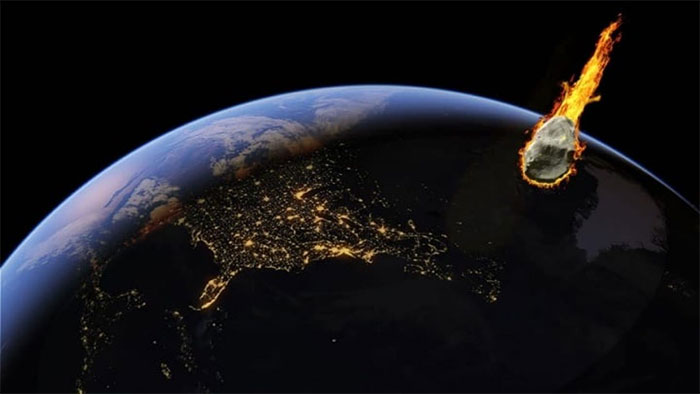Detecting meteors with high probability of hitting the Earth
The meteorite has an estimated diameter of 14m, has been added to the list of hazards to Earth by the European Space Agency (ESA) after calculating the path and detecting it could hit Earth.
The European Space Agency (ESA) called the meteorite SU3 2019 , with an estimated diameter of 14m. If ESA's speculation is correct, this collision could occur on September 16, 2084, or 65 years from now.

This meteorite is also listed on the list of closely monitored closely by ESA.
The risk list is a catalog of all space rocks that are likely to harm the Earth and the survival of mankind. Each item in the list details the meteors and the impact on the Earth, including the estimated impact date, probability of impact, size and velocity.
ESA adds SU3 2019 based on data about the risk it will hit Earth. This meteorite is also listed in the "Priority List" by ESA, requiring scientists to closely monitor each path.
Scientists worry that because the distance of the SU3 2019 path to Earth is only about 120 km, just a slight unpredictable impact from small objects around it can cause it to hit the Earth. land.
SU3 2019 is an Apollo asteroid , belonging to the asteroid group discovered in the 1930s, with a very wide orbit around Earth and the Sun. An orbit of SU3 2019 sometimes passes nearer to other planets like Venus, Mercury and Mars.
Gravity from any of these planets can easily change its orbit so that it is no longer a "passing" but a "direct collision" with the Earth.
However, scientists believe that SU3 2019 is not big enough to create an event that greatly impacts the Earth or threatens the survival of mankind. It is likely that it will ignite before touching the ground.
- A 50 meter meteor could hit Earth later this year
- A new catastrophe meteors grazed the Earth at close range that no one discovered
- Shock with the number of meteors that could hit Earth in the next 100 years
- Russia upgraded missiles to shoot meteors and earth
- NASA's meteorite hunt mission failed
- Drilling deep into craters collided by meteors once destroyed dinosaurs
- Software to predict the harmful effects of meteors
- Video: The destructive power of asteroids when hitting Earth
- The meteorite that cleans humanity is just a matter of time.
- If the comet ever destroyed the dinosaurs that hit the Sun, what would happen?
- NASA continues to hunt for dangerous meteors
- America uses nuclear weapons to protect the Earth from meteors
- Giant meteors are about to destroy the Earth
- Humans can become extinct at any time
 Van Allen's belt and evidence that the Apollo 11 mission to the Moon was myth
Van Allen's belt and evidence that the Apollo 11 mission to the Moon was myth The levels of civilization in the universe (Kardashev scale)
The levels of civilization in the universe (Kardashev scale) Today Mars, the sun and the Earth are aligned
Today Mars, the sun and the Earth are aligned The Amazon owner announced a secret plan to build a space base for thousands of people
The Amazon owner announced a secret plan to build a space base for thousands of people